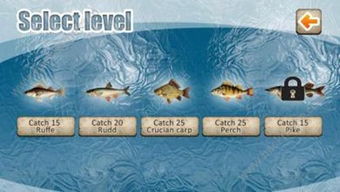Content:
Fishing with earthworms is a classic method that has stood the test of time, offering anglers a simple yet effective way to catch a variety of fish. Earthworms are versatile and can be used in a multitude of fishing scenarios, from freshwater to saltwater environments. If you're looking to improve your earthworm fishing techniques, here's a comprehensive guide to help you become a master angler.
Understanding Earthworms as Bait
Before diving into the techniques, it's important to understand why earthworms are such a popular choice of bait. Earthworms are a natural part of the aquatic ecosystem and are highly nutritious for many fish species. They are rich in protein and are often found in the same areas where fish like to feed, making them an ideal choice for attracting fish to your hook.
Choosing the Right Earthworms
The first step in using earthworms effectively is selecting the right ones. Look for earthworms that are active and plump. Avoid earthworms that are slimy or have a lot of mud on them, as these may be dead or not as appealing to fish. Earthworms should be moist but not dripping with water.
Preparation of the Earthworm
Once you have your earthworms, it's time to prepare them for use as bait. Here are a few tips:
- Clean Your Hands: Earthworms can be slimy, so it's a good idea to clean your hands before handling them to avoid getting them on your fishing line or lure.
- Avoid Cutting: Never cut an earthworm in half or in pieces. This can cause them to bleed and die quickly, reducing their effectiveness as bait.
- Twist the Worm: To make the earthworm more visible to fish, twist it around the hook so that it looks natural. This also helps to keep the worm on the hook for longer.
Types of Earthworm Baiting Techniques
There are several ways to use earthworms as bait. Here are the most common techniques:
The Whole Worm: This is the simplest technique. Simply thread the earthworm onto the hook so that it's visible and looks natural. This method is great for bottom fishing.

The Half Worm: Take one end of the earthworm and thread it onto the hook so that only the tip is visible. This method is good for fish that are actively feeding on the surface.
The Jigging Worm: For a more dynamic presentation, you can rig the earthworm on a jigging hook. This allows you to move the bait in a more erratic motion, which can be very effective for triggering strikes.
The Wacky Rig: This technique involves threading the earthworm onto the hook in a wacky fashion, with the hook inserted through the middle of the worm. This rig creates a lifelike swimming motion, which is great for species that feed on swimming prey.
Fishing Techniques
Now that you know how to rig your earthworms, it's time to talk about the fishing techniques:
Cast and Wait: With earthworms, patience is key. Cast your line out and let it sit still. Earthworms move slowly, so you want to give the fish time to notice them.
Twitching: Occasionally twitch the line to give the earthworm a more lifelike appearance. This can trigger strikes from curious fish.
Bottom Bouncing: If you're fishing in deeper water, you can bounce the bait along the bottom to mimic the natural movement of earthworms.
Surface Skimming: For species that feed on surface worms, you can gently skim the bait along the surface of the water.
Common Mistakes to Avoid
When using earthworms as bait, there are a few common mistakes to avoid:
Overloading the Hook: Don't put too many earthworms on the hook. This can make the bait look unnatural and can also tangle your line.
Too Fast: Moving too quickly can spook fish. Keep your movements slow and deliberate.
Ignoring the Bites: Sometimes, fish will nibble at the earthworm without taking the full bait. Be patient and wait for a solid bite before setting the hook.
Conclusion
Fishing with earthworms is a skill that can be mastered with practice and patience. By understanding the characteristics of earthworms, mastering the various baiting techniques, and applying the right fishing methods, you'll be well on your way to becoming an earthworm fishing expert. Remember, the key to success is not just the technique but also the patience to wait for the fish to come to you. Happy fishing!












